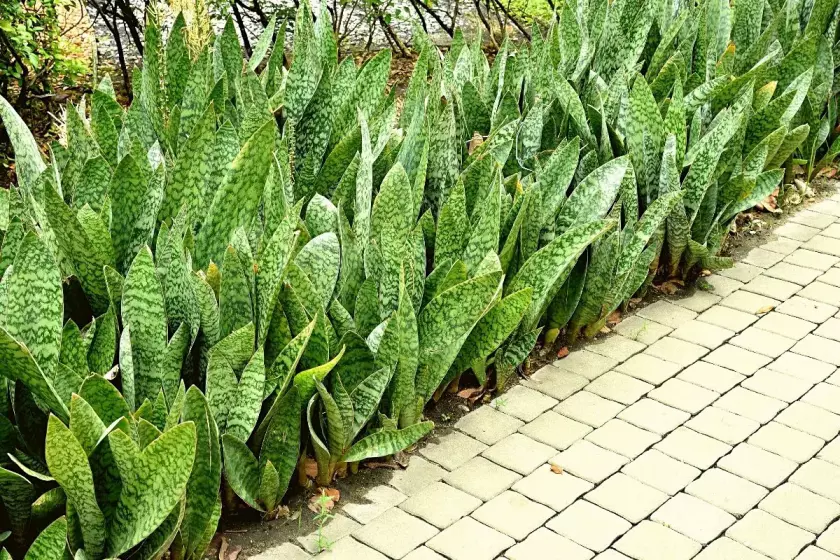If you’re worried about snakes finding their way into your home, you may be wondering if they can come through an air vent. Well, the good news is that it’s highly unlikely for a snake to enter your home through an air vent.
Air vents are typically designed to allow airflow while keeping out debris and pests, including snakes. Additionally, most residential air vents have grilles or screens that provide an extra layer of protection against any unwanted visitors.
Snakes are more likely to enter homes through gaps or openings in doors, windows, or other entry points that are closer to the ground. It’s important to ensure that your home is properly sealed to prevent any potential snake encounters.
If you suspect that you have a snake infestation or any other wildlife issue, it’s best to contact a professional pest control service to safely and effectively handle the situation.

Preventing Snakes from Entering Your Home through Air Vents
Snakes are fascinating creatures that play an important role in our ecosystem. However, having them slither their way into your home through air vents can be a cause for concern. Not only can they pose a danger to you and your family, but they can also cause damage to your property. In this section, we will explore some effective methods to prevent snakes from entering your home through air vents.
1. Install Mesh Covers
One of the most straightforward ways to snake-proof your air vents is by installing mesh covers. These covers are typically made of a durable material like stainless steel or galvanized mesh, which can withstand the sharp teeth of snakes. The mesh should have small enough openings to prevent even the smallest snakes from squeezing through.
When installing the mesh covers, ensure they are securely attached to the vent openings. Use screws or other sturdy fasteners to keep them in place. Regularly inspect the covers to check for any wear and tear, and replace them if necessary.
2. Seal Cracks and Holes
Snakes can be remarkably flexible and can squeeze through even the smallest cracks and holes. Therefore, it is crucial to thoroughly inspect the areas around your air vents for any openings. Seal any cracks, gaps, or holes using caulk or weatherstripping. Pay close attention to areas where the vent pipes meet the wall or foundation, as these are common entry points for snakes.
It is recommended to use a high-quality sealant that is both weather-resistant and durable. This will ensure that the seals remain intact and unyielding to any snake attempting to gain access through the vents.
3. Trim Vegetation around the Vents
Snakes are excellent climbers, and overhanging branches and dense vegetation can provide them with an easy pathway towards your home’s air vents. Regularly trim any trees, shrubs, or vines that are in close proximity to the vents. By creating a clear space around the vents, you eliminate potential hiding spots for snakes and reduce the likelihood of them approaching the vents.
Furthermore, maintaining a well-maintained yard with trimmed grass and vegetation reduces the attractiveness of your property to snakes in general.
4. Inspect and Clean the Vents Regularly
Regular inspection and cleaning of your air vents are essential to keep them snake-free. Make it a habit to inspect the vents for any signs of snake activity, such as shed skin or droppings. If you notice any such signs, take immediate action to remove the snake and implement additional preventive measures.
Cleaning the vents can also help in identifying and sealing any gaps or holes that may have gone unnoticed. Use a vacuum or a brush to remove any debris or blockages that may obstruct the airflow through the vents.
5. Schedule Professional Pest Control Services
If you have a persistent snake problem or if you live in an area known for a high snake population, it may be wise to seek professional pest control services. Experienced pest control professionals have the knowledge and expertise to identify potential entry points and implement effective deterrents to keep snakes away from your home.
They may use techniques such as snake repellents, snake traps, or habitat modifications to make your property less appealing to these reptiles. Regular visits from professionals can provide peace of mind and ensure that your home remains snake-free.
In summary, preventing snakes from entering your home through air vents requires a combination of proactive measures and regular maintenance. By installing mesh covers, sealing cracks and holes, trimming vegetation, inspecting and cleaning the vents, and seeking professional pest control services if necessary, you can effectively protect your home from these unwanted slithering visitors.

Signs of Snake Presence in Your Air Vent System
If you live in an area where snakes are common, it is important to be aware of the possibility of encountering them in unexpected places. One such place that snakes may find their way into is your air vent system. Snakes are known to be excellent climbers and can easily slither into small openings in search of shelter or food. Here are some signs that may indicate the presence of snakes in your air vent system:
1. Unusual Noises
If you start hearing strange hissing or slithering sounds coming from your air vents, it could be a sign that a snake has made its way into your vent system. Snakes can coil up and hide in the ducts, causing these unusual noises to occur when the air flow disturbs them. It is important to investigate further to determine if there is indeed a snake present.
2. Foul Odors
Another sign of snake presence in your air vent system is a foul odor. Snakes, like many other animals, produce waste that can emit a strong smell. If you notice an unpleasant odor coming from your air vents, it could be an indication that a snake has taken up residence in your ductwork. This odor is often described as musky or ammonia-like.
3. Shed Snake Skin
Snakes shed their skin regularly as they grow. If you come across a shed snake skin near your air vents, it is a clear sign that snakes have been in your vent system. Snake skin is typically translucent and in the shape of the snake’s body, complete with scales. It is important to take immediate action if you find shed skin, as it means the snake is actively using your air vents as a hiding place.
4. Droppings or Tracks
If you notice small droppings or tracks near your air vents, it could be evidence of snake presence. Snakes leave behind feces that are often cylindrical in shape and may contain bones or fur from their prey. They may also leave behind tracks in dusty areas near the vents. If you suspect snake activity, it is advisable to contact a professional pest control service to safely remove them.
5. Damaged Ductwork
Sometimes, snakes can cause physical damage to your air vent system. If you notice any holes or gaps in the ductwork, it could be a result of a snake trying to enter or exit the system. Snakes can be quite destructive when they are trying to find their way through tight spaces. It is important to have any damage repaired promptly to prevent further intrusion.
6. Visual Sighting
The most obvious sign of snake presence in your air vent system is a visual sighting. If you see a snake coming out of your air vents or notice it slithering around near the openings, it is crucial to take immediate action. Remove yourself and others from the area and contact a professional snake removal service to safely handle the situation.
In summary, if you experience any of these signs, it is important to take them seriously and address the issue promptly. Snakes in your air vent system can pose a risk to your health and safety, as well as cause damage to your HVAC system. By being vigilant and seeking professional help, you can ensure the removal of snakes and the restoration of a safe and functioning air vent system.

What to Do If You Find a Snake in Your Air Vent
Discovering a snake in your air vent can be a startling and unnerving experience. While snakes are generally more afraid of humans than we are of them, it is important to handle the situation calmly and take the necessary steps to ensure your safety. In this section, we will discuss what you should do if you find a snake in your air vent.
1. Stay Calm
The first and most important thing to remember is to stay calm. It is natural to feel scared or anxious when you encounter a snake, but panicking can lead to unnecessary accidents. Take a deep breath and try to remain composed.
2. Do Not Approach or Agitate the Snake
Snakes can become defensive if they feel threatened. It is crucial that you avoid approaching or agitating the snake in any way. This means refraining from poking it with a stick or trying to capture it yourself. Instead, keep a safe distance and allow professionals to handle the situation.
3. Secure the Area
While waiting for professional help to arrive, make sure to secure the area. Close off any entrances to the room or duct where the snake was found to prevent it from escaping into other parts of your home. This will help contain the snake and minimize the risk of further encounters.
4. Contact a Professional Wildlife Removal Service
It is highly recommended to contact a professional wildlife removal service to handle the snake. These professionals have the necessary experience, tools, and knowledge to safely capture and relocate the snake. They can also inspect your home to identify any potential entry points and prevent future infestations.
5. Follow Prevention Measures
After the snake has been safely removed, it is important to take preventive measures to minimize the chances of a recurrence. Some steps you can take include sealing any holes or gaps in your vents, trimming back vegetation near your home, and keeping your surroundings clean and clutter-free.
6. Seek Medical Attention, if Necessary
If you or anyone in your household has been bitten by the snake or is experiencing any symptoms of a snakebite, it is crucial to seek immediate medical attention. Do not attempt to treat the bite on your own.
7. Educate Yourself about Local Snake Species
Depending on your location, certain snake species may be more common than others. Educating yourself about the local snake species can help you identify potential dangers and take appropriate precautions. You can reach out to local wildlife authorities or herpetological societies for more information.
8. Stay Vigilant
While finding a snake in your air vent is a rare occurrence, it is important to stay vigilant. Regularly inspecting your HVAC system and keeping an eye out for any signs of snakes or other pests can help you address any issues promptly and ensure the safety of your home.
In summary, if you find a snake in your air vent, it is crucial to stay calm, avoid approaching or agitating the snake, secure the area, and contact a professional wildlife removal service. Following prevention measures and educating yourself about local snake species can help prevent future encounters. If necessary, seek medical attention and stay vigilant to ensure the safety of your home.
Professional Snake Removal Services for Air Vent Infestations
If you suspect that there are snakes living in your air vents, it is important to take immediate action to ensure the safety of your home and family. Snakes in air vents can pose a threat as they can easily enter your living space and cause panic and fear. In such situations, it is essential to seek the help of professional snake removal services.
Snake infestations in air vents can occur due to various reasons. Snakes are attracted to warm and dark spaces, which makes air vents an ideal hiding spot for them. They can enter through small openings or cracks in the vents and make themselves comfortable inside. However, it is crucial to remember that attempting to remove snakes on your own can be dangerous and should be avoided.
Professional snake removal services have the necessary expertise and equipment to safely and effectively remove snakes from air vents. These experts are trained in handling snakes and are equipped with tools that allow them to capture the snakes without causing harm to the animals or putting themselves at risk.
When you enlist the help of professional snake removal services, they will conduct a thorough inspection of your air vents to assess the extent of the infestation. They will identify any entry points that need to be sealed to prevent further snake intrusion. Once the assessment is complete, they will develop a customized plan to remove the snakes from your air vents.
One of the methods used by professional snake removal services is the use of snake traps. These traps are specifically designed to capture snakes without causing them harm. The traps are strategically placed near the vent openings, enticing the snakes to enter and be safely trapped. Once the snakes are captured, the professionals will carefully remove them from the traps and transport them to a safe location away from your property.
In some cases, if the snake infestation is severe, the professionals may use snake repellents or snake deterrents to discourage the snakes from returning to your air vents. These repellents are typically made from natural ingredients that are safe for both humans and animals. The professionals will apply the repellents in and around the air vents to create an inhospitable environment for the snakes.
It is important to understand that snake removal is not a one-time solution. Once the snakes have been removed from your air vents, the professionals will provide recommendations to prevent future infestations. This may involve regular inspections of your vents, sealing any potential entry points, and maintaining a clean and clutter-free environment around your property.
In summary, if you suspect that you have snakes living in your air vents, it is essential to seek professional snake removal services. These experts have the knowledge, experience, and tools to safely and effectively remove snakes from your vents, protecting your home and family from potential harm. Remember, attempting to remove snakes on your own can be dangerous, so leave it to the professionals to ensure a safe and snake-free environment.
FAQs
Can a snake come through an air vent?
Yes, snakes can enter a building through air vents if they are not properly secured. They can squeeze through small openings and often seek shelter or prey inside buildings.
How can I prevent snakes from entering through air vents?
To prevent snakes from entering through air vents, make sure all vents are securely covered with a fine mesh or screen. Regularly inspect and maintain the vent covers to ensure they are intact and free from any gaps or damage.
What should I do if I find a snake in my house through the air vent?
If you find a snake in your house through an air vent, it is best to contact a professional pest control service or animal control agency to safely remove the snake. Attempting to handle or remove the snake yourself can be dangerous.
Conclusion
In conclusion, while it is unlikely for a snake to come through an air vent, it is not impossible. Snakes are highly adaptive creatures and can squeeze through tight spaces. However, it is important to note that proper ventilation systems have measures in place to prevent such occurrences. Regular maintenance and inspections can help ensure that air vents are secure and free from any potential entry points for snakes or other pests.
It is always recommended to keep your home or premises well-sealed to minimize the risk of any unwanted visitors, including snakes. Taking preventive measures such as sealing gaps, using mesh coverings, and keeping vegetation away from vent openings can further deter snakes from entering your space.
Remember, if you ever encounter a snake indoors, it is best to seek professional assistance from a trained wildlife removal expert to ensure the safe removal and relocation of the snake.
